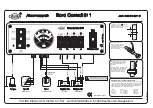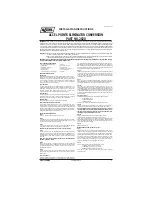
Cadillac XT5 Owner Manual (GMNA-Localizing-MidEast-14590488) - 2021 -
CRC - 7/15/20
VEHICLE CARE
309
Tire Pressure
Tires need the correct amount of
air pressure to operate effectively.
{
Warning
Neither tire underinflation nor
overinflation is good.
Underinflated tires, or tires that
do not have enough air, can
result in:
.
Tire overloading and
overheating, which could lead
to a blowout.
.
Premature or irregular wear.
.
Poor handling.
.
Reduced fuel economy.
Overinflated tires, or tires that
have too much air, can result in:
.
Unusual wear.
.
Poor handling.
.
Rough ride.
.
Needless damage from road
hazards.
The Tire and Loading Information
label on the vehicle indicates the
original equipment tires and the
correct cold tire inflation
pressures. The recommended
pressure is the minimum air
pressure needed to support the
vehicle's maximum load carrying
capacity. See
How the vehicle is loaded affects
vehicle handling and ride comfort.
Never load the vehicle with more
weight than it was designed to
carry.
When to Check
Check the pressure of the tires
once a month or more. Do not
forget the compact spare, if the
vehicle has one. The compact
spare cold tire pressure should be
at 420 kPa (60 psi). See
.
How to Check
Use a good quality pocket-type
gauge to check tire pressure.
Proper tire inflation cannot be
determined by looking at the tire.
Check the tire inflation pressure
when the tires are cold, meaning
the vehicle has not been driven for
at least three hours or no more
than 1.6 km (1 mi).
Remove the valve cap from the
tire valve stem. Press the tire
gauge firmly onto the valve to get
a pressure measurement. If the
cold tire inflation pressure
matches the recommended
pressure on the Tire and Loading
Information label, no further
adjustment is necessary. If the
inflation pressure is low, add air
until the recommended pressure is
reached. If the inflation pressure
is high, press on the metal stem in
the center of the tire valve to
release air.
















































